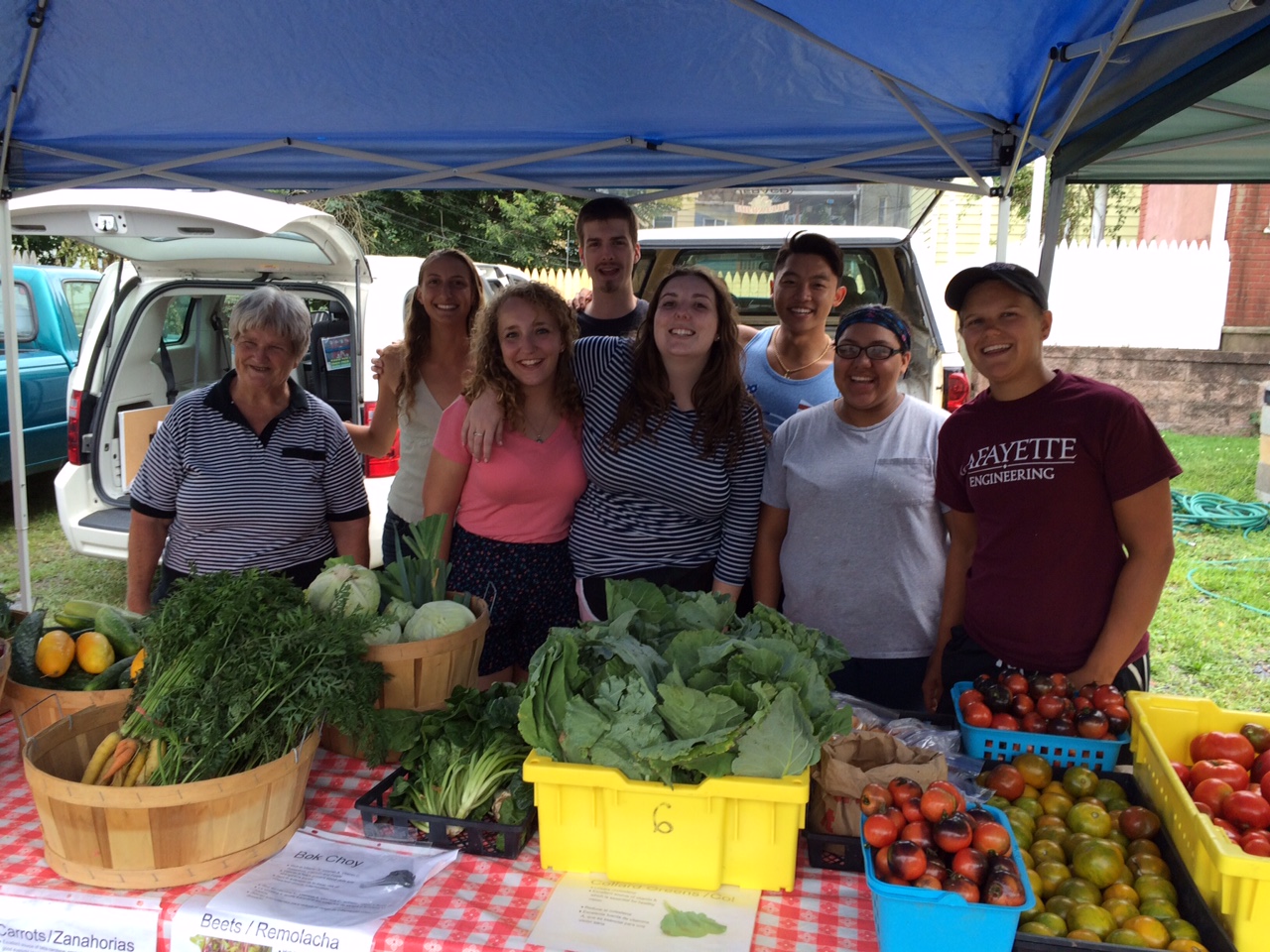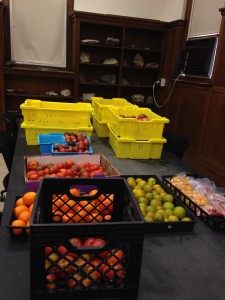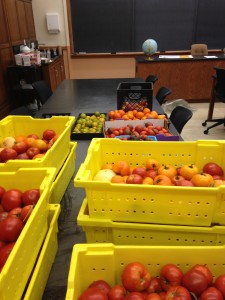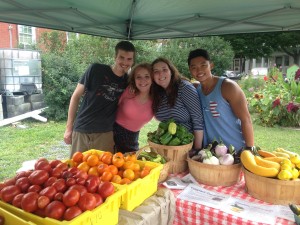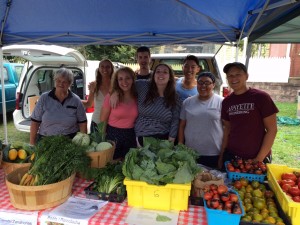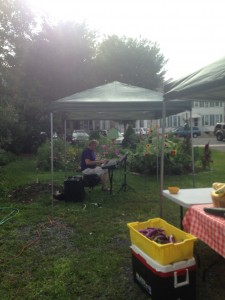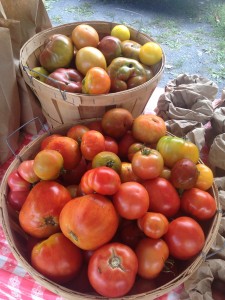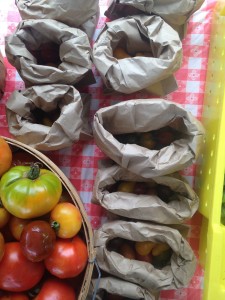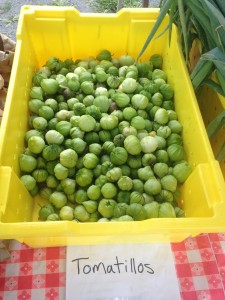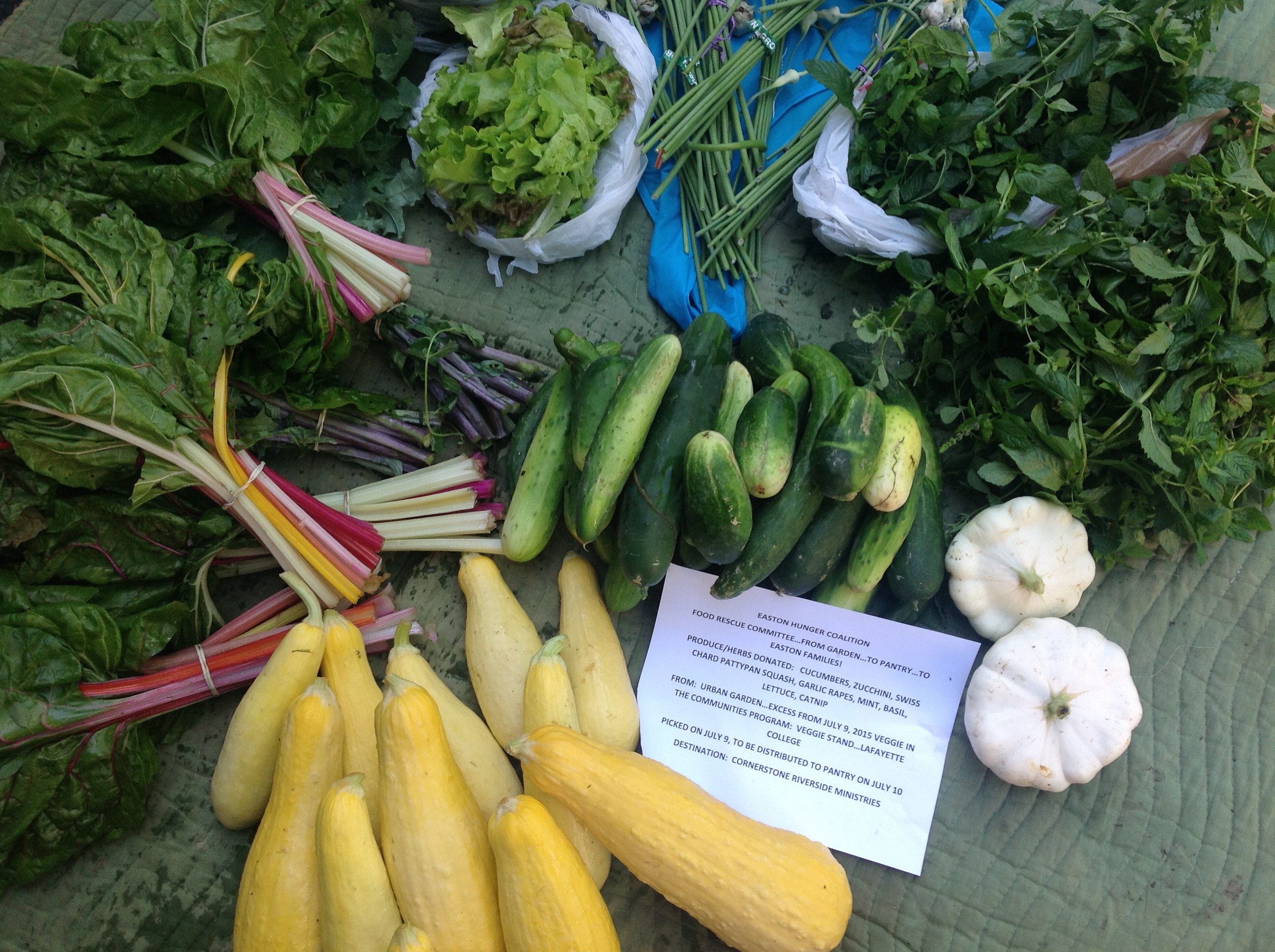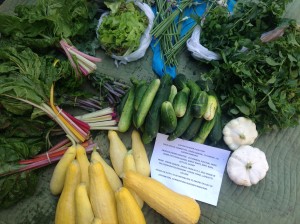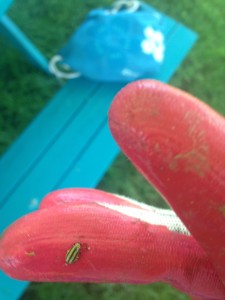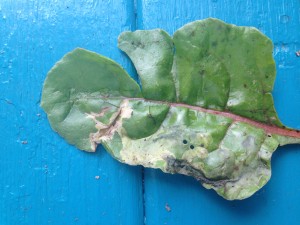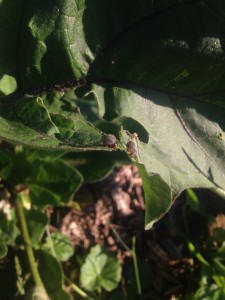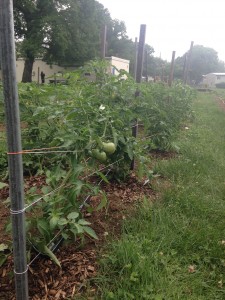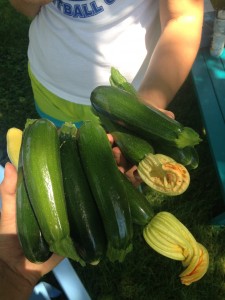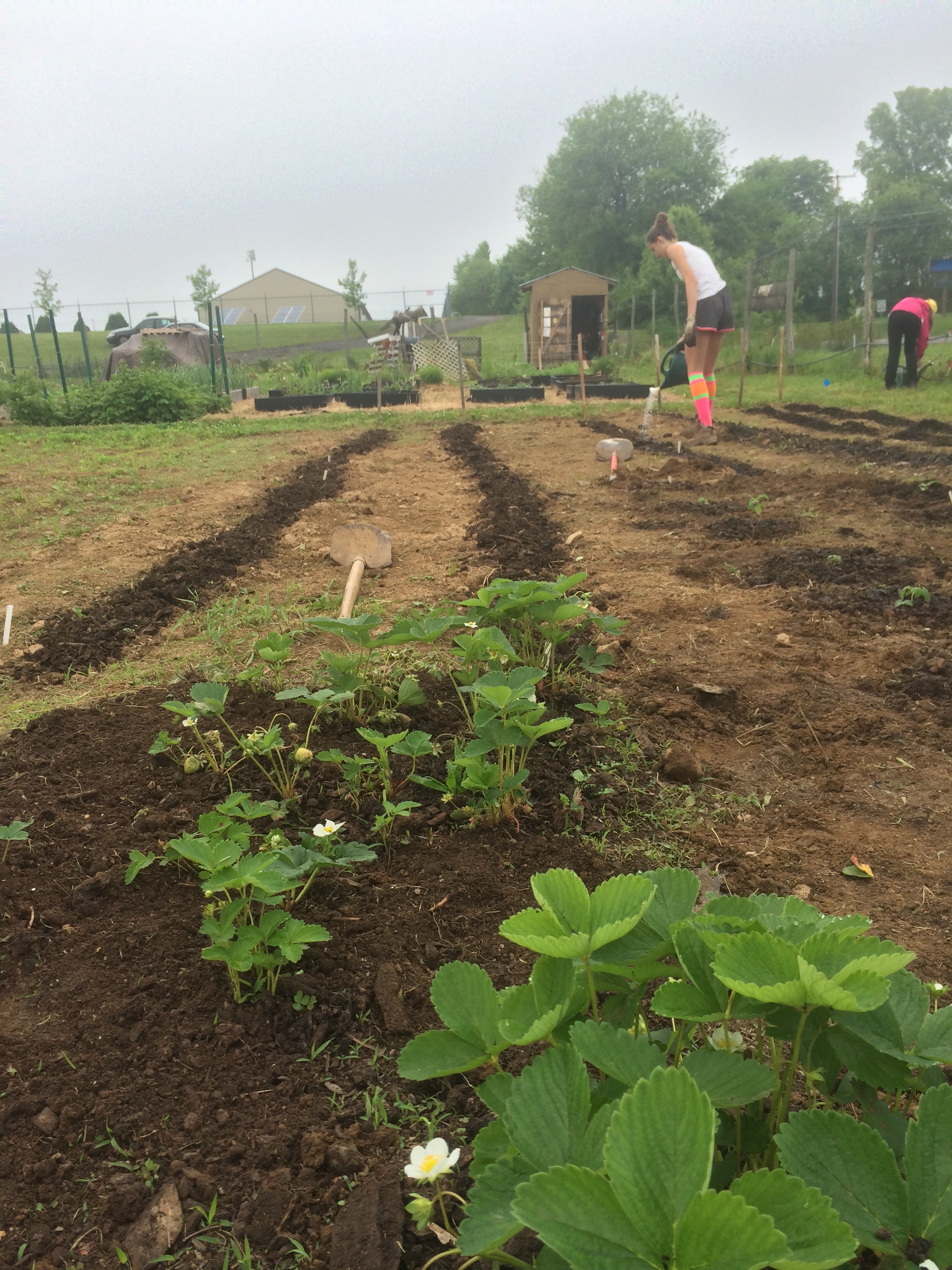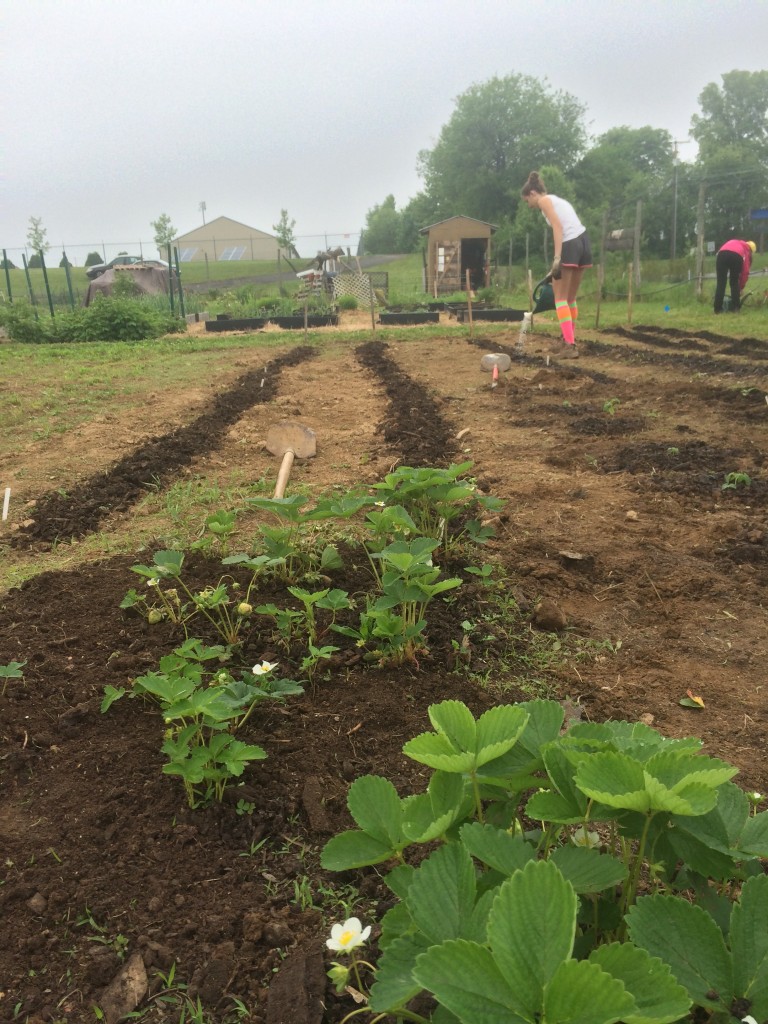This week Rachel returned to work and we had a full VIC team to harvest and run another successful stand. It is amazing what having some extra hands and passionate helpers can do to speed up operations and add some more fun to the process to which we’ve become so accustomed. A group of POSP (Pre-Orientation Service Project) students led by Nicole Maksymiw, a Lafayette sophomore, joined Rachel, Sophia Feller, and me for harvest at the Urban Farm. This group of energetic first-years harvested beans, tomatoes, green onions, kale, and swiss chard. It was wonderful to see their excitement experiencing the Urban Farm for the first time. I gleefully answered their questions about produce and VIC. They helped with washing and bundling the produce as well.
At the Urban Farm we harvested over 150 pounds of tomatoes – 6 full harvesting crates – while we typically only harvest 3 or 4 full crates. We didn’t want to let any more tomatoes rot on the vine. In future years, we hope that the Urban Farm will consider planting fewer tomato plants to reduce the excess of this crop which is highly prone to rotting if it is not consumed in a timely manner. The Urban Farm receives a large amount of donated tomato plants, but at the Urban Farm, where the labor structure is more variable than at LaFarm, managing this large quantity of tomato plants becomes problematic. Tomatoes must be tied throughout the summer and efficiently harvested to ensure proper growth and less waste on the vine. Instead, Rachel and I suggest that fewer tomato plants at the Urban Farm would allow for more variety and a more manageable space for vegetable production.
In addition to this substantial amount of tomatoes from the Urban Farm, we received tomato donations from West Easton Treatment Center and East 40. The result can be seen in the pictures below:
This week, we have been focused on sorting out the logistics for the harvest and the Stand. We decided that we would harvest at the Urban Farm on Wednesday evenings from 3:00 to 6:00 PM and at LaFarm from 8:30 AM to 12:00 PM on Thursdays. The stand will run through the first two weeks of the school year. One major issue will be storage for the produce. We are still unsure of how much cooler space will be available for us to use in Marquis. Our hope is to also have space in the basement of The Spot to store tomatoes since we can no longer use the classroom in Van Wickle once classes commence.
With the help of Nicole Maksymiw, we are planning to include more volunteers to harvest and help at the Stand for these next two weeks. This week, Nicole organized a group of three additional Landis volunteers to help set up and run the Veggie Stand. This was a great opportunity to meet individuals who are involved in community service opportunities through Landis. They were all eager to get involved with the VIC project and I look forward to working with them in other ways during my senior year at Lafayette. This crew helped distribute produce. They were so happy to work with us! In addition to the Landis crew and Alex (our VIC community intern), Veronica, a returning volunteer who is an Easton high school student, was present for distribution. Other community members also helped set up and distribute produce at the stand. We had a strong team this week!
Sophia provided a large bubble wand to entertain kids at the stand. Also, Easton Hospital provided samples of a Parmesan tomato recipe. It was delicious and certainly appropriate for a week with so many tomatoes available. One community member even brought a delicious Lebanese dish to the volunteers and VIC staff. It was made with produce from the stand (tomatoes, zucchini, eggplant, onions) and chickpeas!
The Veggie Stand has been a success throughout the summer. We are nervous about how everything will flow logistically as we enter the school year. We anticipate challenges with storage and transportation, but we are hopeful that we will have eager volunteers to help us through these last two weeks.
